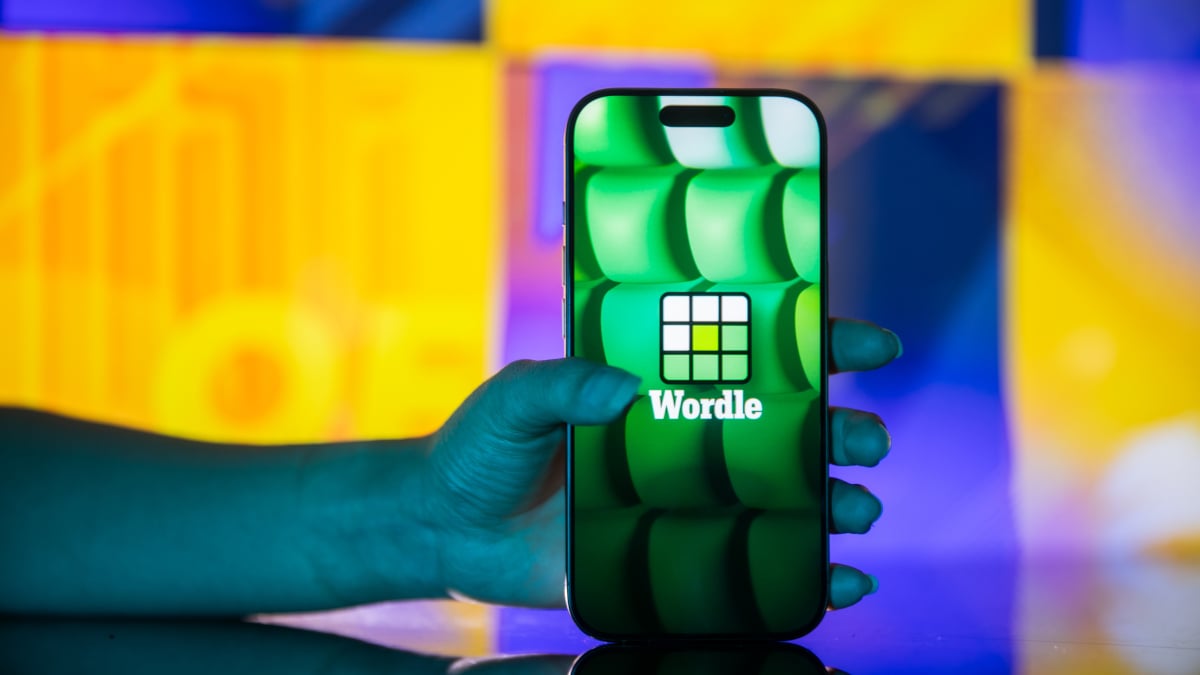Entertainment
How Gilmore Girls Helped Me Understand My Mother



Two decades ago, on a blistering winter night, I turned on the television and found something I’d never encountered before: A mother and daughter who teased each other like sisters. Who shared confidences like friends. Who accepted each other for who they were, rather than viewing their differences as faults.
I’m talking, of course, about Gilmore Girls.
“Mother” and “daughter.” Those words meant something very different to me than it did to Lorelai and Rory. Because, you see, my own mother bore a remarkable resemblance to Lorelai’s mother, Emily. My mother had Emily’s enormous dark eyes and impossibly high cheekbones, her helmet of hair and love of department stores. Emily’s pleated trousers and tailored blouses and St. John suits could have been filched from my mother’s closet.
But, most important, my mom shared Emily’s sharply defined expectations for her children and her coolly rigid idea of appropriate behavior, dress, grooming, and vocation. Acceptable dinner conversation: school, work, travel plans. Acceptable fabrics: cashmere, wool, silk. Once, as a small child, I suggested to my mother that we go camping; “Animals sleep outside,” she responded. “People sleep in hotels.” When I was in eleventh grade, my mother suggested I drop my best friend because she wore a translucent skirt without a slip.
In short, the world from which Lorelai sought escape could have been my own — a world centered on societal rules that allowed no room for even a smidge of sentiment.
Midway through that first season, I burst into gulping sobs when Emily tells Lorelai, “You always let your emotions get in the way. That’s the problem with you, Lorelai. You don’t think.” This was, to a tee, my mother’s problem with me. “Mom, please,” Lorelai says, gently, begging, for her mother to try to see things from her point of view, or to allow her to fall in love, or to be disappointed, or sad, or excited; to see that decisions can be made based on emotional inclinations rather than societal expectations. I had uttered those exact words, too. Though not for some time. I had — just as Lorelai before the show starts — given up on my mother.
That same year, I made some radical changes to my life, as a 28-year-old New Yorker: I stopped going to dinner parties simply because it was expected of me, and I began to consider both my ambition and my storm-like emotions as assets, rather than flaws. I started to think, too, about what it meant to be a mother. I had been married for two years and had deflected the pressure — from my husband, my parents, the world — to have children, in part because I felt like a kid myself, still in the thrall of my mother’s judgements, and also because I didn’t understand how to be a mother unlike my own.
But, suddenly, I saw that a different style of motherhood was possible: Lorelai was a parent who allowed her child to be her true self, who responded with warmth, who kept her sense of humor, even in the hardest moments.
Seven years later, I watched the final season of Gilmore Girls as my first child slept in his toddler bed. A year later, my daughter arrived, and I re-watched the entire series, from beginning to end, sometimes with her asleep in my arms, reminding myself of the mother I wanted to be.
Years passed and my kids grew into Rory-like teens: precocious readers and writers, hilarious companions, compassionate friends. One evening, as we sat on our big shabby couch — not unlike Lorelai’s big shabby couch — I had the rare thought that I had succeeded; I had forged a different style of motherhood than the one with which I had been raised.
This was followed by a second thought: My kids were old enough to watch Gilmore Girls.
And so we began, the kids laughing at the similarities between Lorelai and me — a coffee-swiller who quoted old movies — and my mother and Emily. But as we watched, a strange thing happened: I found myself sympathizing with Emily.
Now that I had teens of my own, I saw Emily as a tragic figure, a woman who had given her daughter everything — including the full force of her energy and love — only to have that daughter, at 16, cut her off completely. My son Coleman was 16. Like Emily, I had poured my everything into him. If he absconded in the night, refusing to speak to me, I wasn’t sure I would survive. And suddenly, the weight of my own mother’s sorrow hit me. She had raised me to be a part of her life, and I had rejected that life, wholesale. How had she survived?
Emily, I realized, was not a monster of superficiality, but a woman eviscerated by loss. Before me, my mother had already lost two children — my older brother and sister were killed in a car accident before my birth. Maybe she was not the villain I’d always believed her to be, but a mother awash in grief, afraid to give herself over to a child — me — who might leave her, too.
During those weeks, I ached to run to my mother, to tell her how sorry I was, that I knew she loved me, that I understood that her tightly held code must have kept her sane and functioning.
Not long afterward, my mother — at 93 — landed in the hospital with viral pneumonia, and soon was transferred, unconscious, to hospice. As I sat by her bed, stroking her hair, I thought about the Mom, Please episode, which ends with Rory coming home to find Lorelai in bed, fully dressed, rigid with grief. Without a word, Rory climbs in next to her. I had never seen my mother cry. She had never let me see the self behind the perfectly applied Chanel Rouge Gabrielle. Or maybe I had not tried hard enough to break past her façade. Maybe I had not said mom, please often or hard enough.
Now, holding my mother’s hand, swollen from the painkillers dripping into her arm, all the anger I’d held for her vanished. All I wanted was my mother back — not a Lorelai version, who’d allow me access to her soul, but my actual mother.
And so I talked. And talked and talked. I reminisced about the fun we’d had on our family trips to California and Florida, about movies she loved and books she hated, about the garden she’d tended outside my childhood home. I asked her all the questions I’d never been able to ask. As I talked, her face moved in response, her mouth forming silent words, when I said, “I love you, Mom.”
“Do you think you and Grandma will ever be able to talk about all the things you’ve gone through?” Rory asks Lorelai, in an early episode. “No,” Lorelai tells her. “I’ve tried. I’ve tried my whole life. But my mother and I, we speak a different language.” At first, I thought Gilmore Girls changed my life because it allowed me to be my actual self, without shame. Years later, I thought it changed my life by showing me how to be a mother. Nearly a quarter century since I turned on the TV and discovered two women talking and talking, it changed my life again, by showing me that — as Lorelai slowly discovers herself — my mother and I spoke not different languages but simply variant dialects of the same tongue: love.
A longer version of this essay appears in Life’s Short, Talk Fast: Fifteen Writers on Why We Can’t Stop Watching Gilmore Girls, an anthology of essays that comes out this week.
Joanna Rakoff is the author of the bestsellers My Salinger Year and A Fortunate Age. Her memoir, The Fifth Passenger, will be out next year. You can watch the film adaptation of My Salinger Year, and you can find Joanna on Instagram.
P.S. Three women describe their complicated mother/daughter relationships, and what it’s like to raise children in different countries.
Entertainment
Best Mothers Day gifts: Show mom some love

Mother figures are the backbone of the world. Yours may be your biological mother, or maybe she’s your mother-in-law, your best friend’s mom, or simply someone whose motherly instinct has helped you through hard times.
Moms teach you the adulting necessities, give advice even if the problem is your fault, and above all, they put up with your shit and (almost) never complain.
The game plan here isn’t just to snag the last bouquet at CVS just so you’re not the kid who forgot Mother’s Day (but definitely also get flowers). And you don’t even need to spend a lot of money. (Peep our list of Mother’s Day gifts that cost less than $50. Want even more cheap gift ideas?
Skip the generic mugs and show your appreciation with a gift picked just for her: Whether it’s something to make a part of her life easier, something she’s mentioned wanting in passing, or simply something to make her feel like a damn queen, you can’t put a price on everything she’s done for you, but heartfelt gifts certainly help.
After all, they say “No matter how hard you try, you always end up like your mother.” But is that even a bad thing?
Entertainment
Ban subscriptions and get Microsoft Office 2024 for life for just £121

TL;DR: Grab Microsoft Office 2024 Home and Business for PC or Mac for just £120.54 through June 1.
You wouldn’t keep paying for Netflix if you could own your favorite shows, right? So why are you still subscribing to Office apps you use every day? Microsoft 365’s price keeps going up, but there’s finally a way to break free — and it’ll cost you way less in the long run.
Microsoft Office 2024 is the answer you’ve been looking for. Instead of monthly payments, simply pay £120.54 once and be set for life (reg. £188.37). It’s that simple. And, yes, this lifetime download works for PC or Mac.
What’s included?
This license comes with:
-
Word
-
Excel
-
PowerPoint
-
Outlook
-
OneNote
The newest version of Microsoft Office is a little different from Microsoft 365. But just because you’re switching to a lifetime license doesn’t mean you’ll miss out on some of the most recent updates. Word and Excel both still have AI integrations for text suggestions and smart data analysis, and PowerPoint still has improved tools for recorded presentations.
Once you’ve redeemed your purchase, you can install your apps on one computer. After that, they’re yours to use however you want. No more subscription fees or sudden price hikes to worry about.
Why rent when you can own?
Mashable Deals
Get a Microsoft Office lifetime license on sale for £120.54 with no coupon needed.
StackSocial prices subject to change.
Entertainment
Wordle today: Answer, hints for May 9, 2025

Oh hey there! If you’re here, it must be time for Wordle. As always, we’re serving up our daily hints and tips to help you figure out today’s answer.
If you just want to be told today’s word, you can jump to the bottom of this article for today’s Wordle solution revealed. But if you’d rather solve it yourself, keep reading for some clues, tips, and strategies to assist you.
Where did Wordle come from?
Originally created by engineer Josh Wardle as a gift for his partner, Wordle rapidly spread to become an international phenomenon, with thousands of people around the globe playing every day. Alternate Wordle versions created by fans also sprang up, including battle royale Squabble, music identification game Heardle, and variations like Dordle and Quordle that make you guess multiple words at once.
Wordle eventually became so popular that it was purchased by the New York Times, and TikTok creators even livestream themselves playing.
What’s the best Wordle starting word?
The best Wordle starting word is the one that speaks to you. But if you prefer to be strategic in your approach, we have a few ideas to help you pick a word that might help you find the solution faster. One tip is to select a word that includes at least two different vowels, plus some common consonants like S, T, R, or N.
What happened to the Wordle archive?
The entire archive of past Wordle puzzles was originally available for anyone to enjoy whenever they felt like it, but it was later taken down, with the website’s creator stating it was done at the request of the New York Times. However, the New York Times then rolled out its own Wordle Archive, available only to NYT Games subscribers.
Is Wordle getting harder?
It might feel like Wordle is getting harder, but it actually isn’t any more difficult than when it first began. You can turn on Wordle‘s Hard Mode if you’re after more of a challenge, though.
Here’s a subtle hint for today’s Wordle answer:
Gibberish.
Mashable Top Stories
Does today’s Wordle answer have a double letter?
There are no recurring letters.
Today’s Wordle is a 5-letter word that starts with…
Today’s Wordle starts with the letter T.
The Wordle answer today is…
Get your last guesses in now, because it’s your final chance to solve today’s Wordle before we reveal the solution.
Drumroll please!
The solution to today’s Wordle is…
TRIPE.
Don’t feel down if you didn’t manage to guess it this time. There will be a new Wordle for you to stretch your brain with tomorrow, and we’ll be back again to guide you with more helpful hints.
Are you also playing NYT Strands? See hints and answers for today’s Strands.
Reporting by Chance Townsend, Caitlin Welsh, Sam Haysom, Amanda Yeo, Shannon Connellan, Cecily Mauran, Mike Pearl, and Adam Rosenberg contributed to this article.
If you’re looking for more puzzles, Mashable’s got games now! Check out our games hub for Mahjong, Sudoku, free crossword, and more.
Not the day you’re after? Here’s the solution to yesterday’s Wordle.







